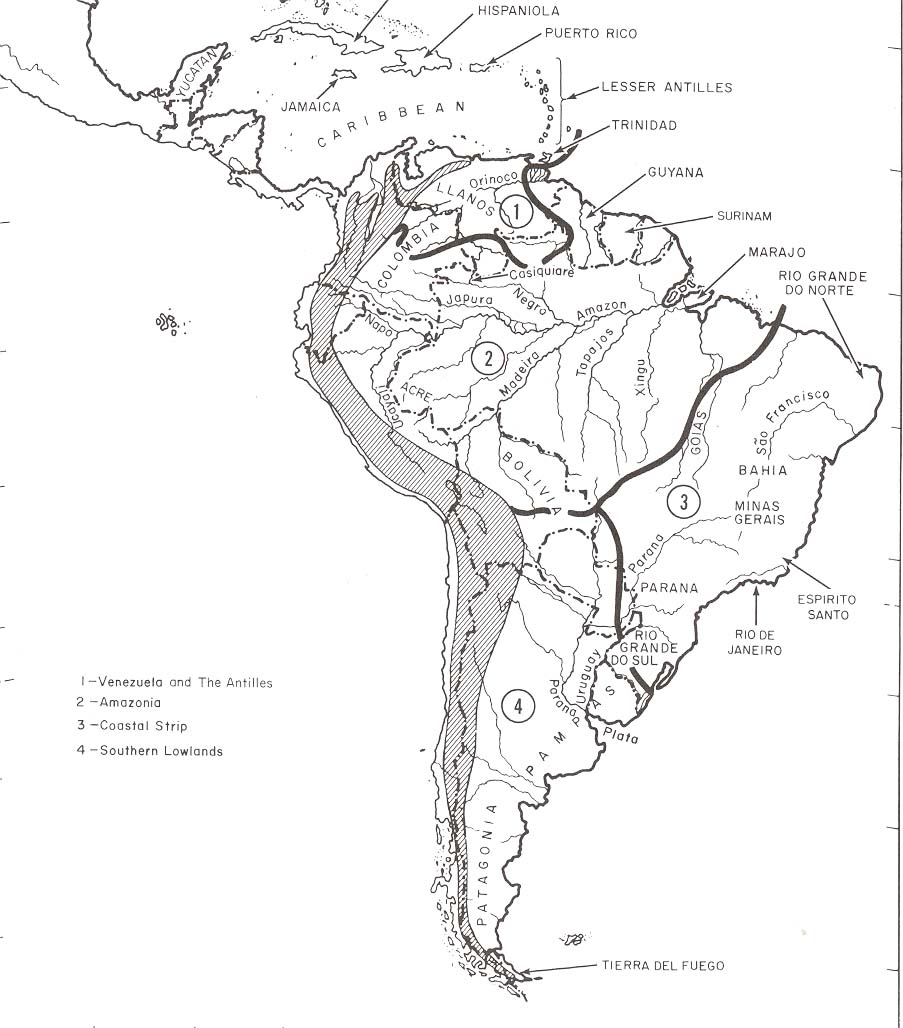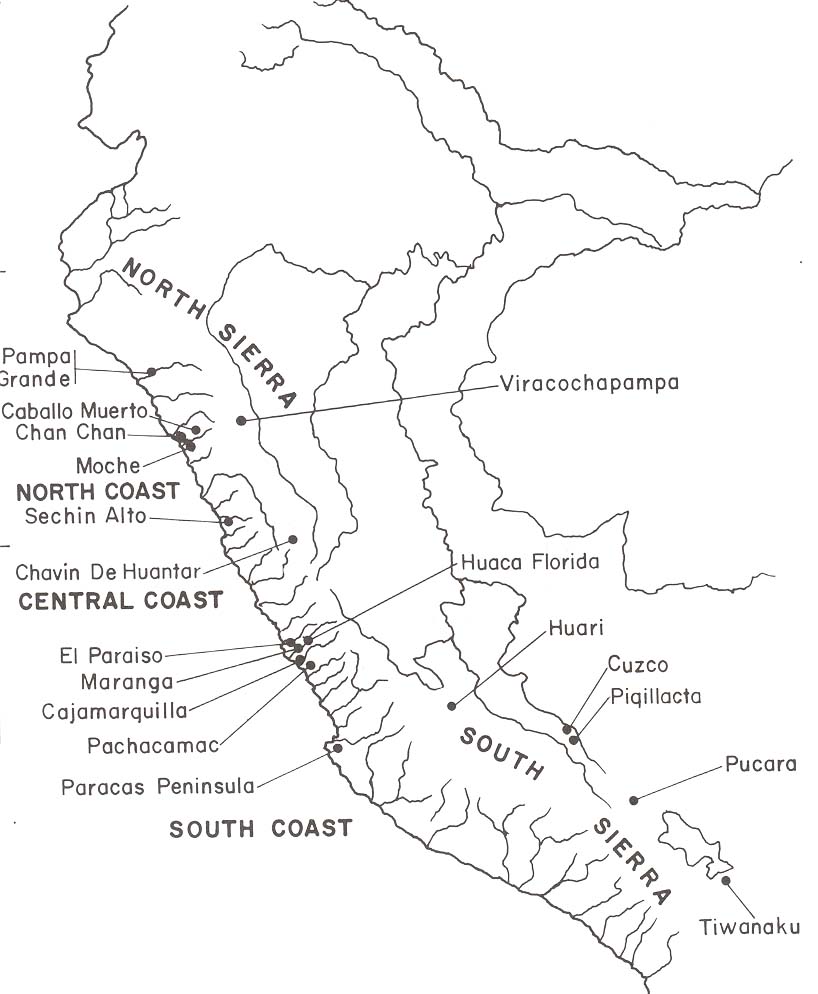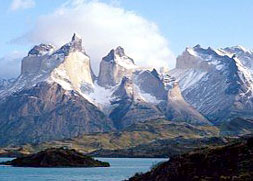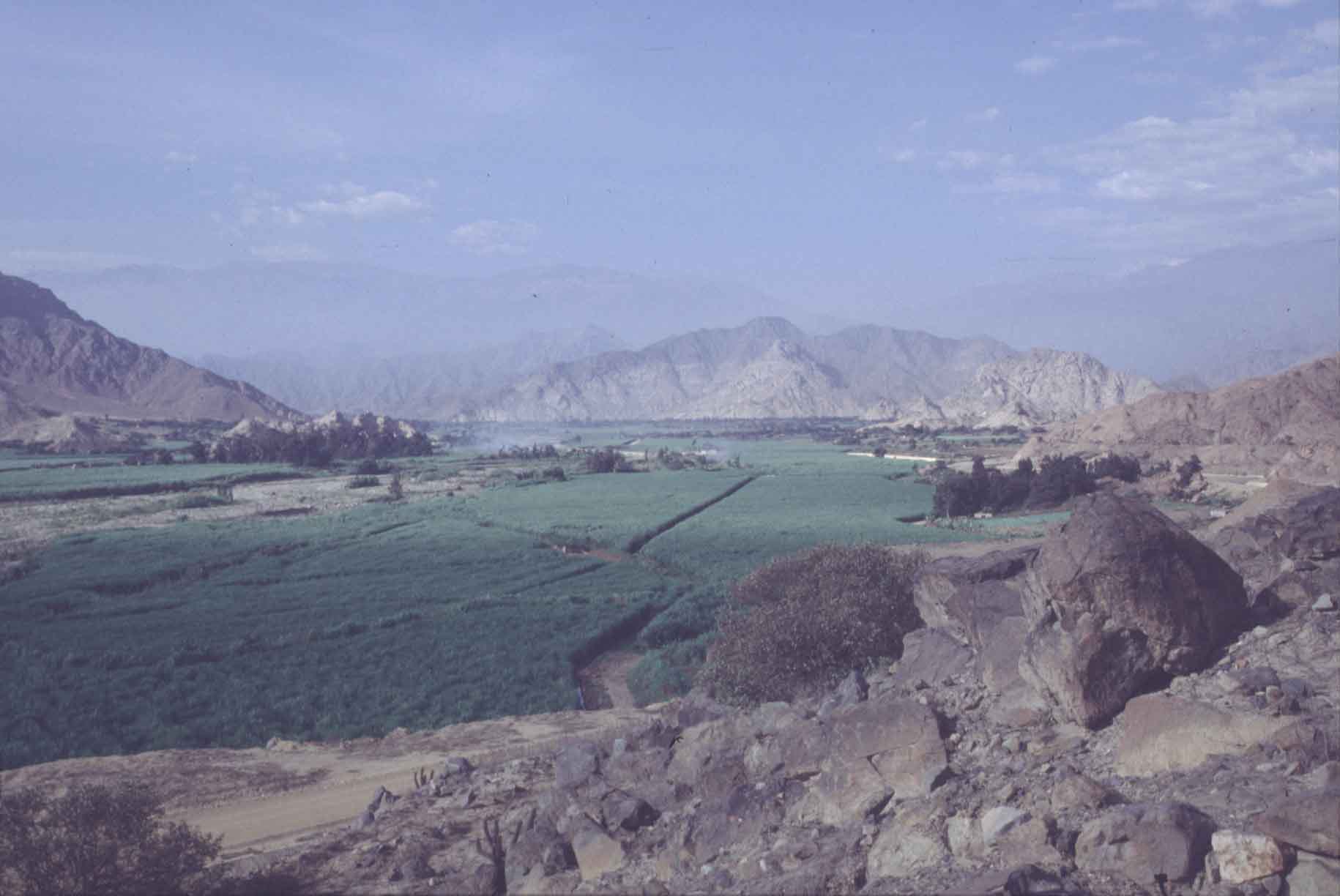
ANTH 336 New World Prehistory
Dr. Darlene Applegate
Fall 2006
Andean South America Culture
Area
Environmental Characteristics
BOUNDARIES
North: Central America culture area
West: Pacific Ocean
East: Amazon and Southern Lowlands culture areas
[east of Andes Mountains]
South: Tierra del Fuego
includes present-day countries of Columbia, Ecuador, Peru, Bolivia and
Chile

Map Showing the Andean Culture Area (Shaded) and Other Culture Areas of
South America.
GENERAL CHARACTERISTICS
fundamental dichotomy is highlands (Andes Mountains) and lowlands
(coast)
environmental conditions vary both horizontally and vertically, and
there are many microzones
coastal plain zoned
horizontally away from coast
highlands zoned vertically by altitude
there were major environmental changes at the end of the Pleistocene
Epoch (Ice Age), circa 10,000 BC

Map Showing Major Coastal River Valleys and Archaeological Sites
in a Portion of the Andean Culture Area.


Photographs of the Andes Mountains (Left) and the Moche River Valley,
Peru.
http://www.hotelsru.com/guides/peru-the-andes-mountains.asp
http://rla.unc.edu/Teaching/mop/LifeonProject.htm
POSITIVE FEATURES
1. rich marine resources (e.g., mammals, reptiles,
birds, fish, shellfish), except when El Nino flows and disrupts marine
organisms
allowed greater sedentism based on
foraging subsistence strategy
2. numerous river systems in the highlands and on the
coast
important for transportation
important for irrigation
3. fertile soil, especially on the coast
important for supporting population
concentrations and complex society
4. long growing season on coast
important for supporting population
concentrations and complex society
5. abundant natural resources, including metal ores,
clay, building stone, salt
important to craft industries
related to trade networks
NEGATIVE FEATURES
1. only 10% of land arable, or fit for plant
cultivation
created conflict over lands
created need to bring uneven land surfaces into production using new
technologies like terracing
2. desert conditions on coast (except at lomas, or fog meadows)
required the development of irrigation
technology
3. high altitude (many areas over 9000 ft, some range
from 12,000 - 15,000 ft)
biological stresses associated with
high altitude (hypoxia, cold stress, wind stress, etc.)
required the development of transportation technologies such as bridges
4. environmental circumscription due to mountain
peaks and valleys
affected modes of transportation and
communication
Return to New
World Prehistory Home Page
Visit the Western Kentucky University
Home
Page, Western Online
Page composed by Darlene Applegate, darlene.applegate@wku.edu
Last updated on December 5, 2006
All contents copyright (c), 2006. Western Kentucky
University.





